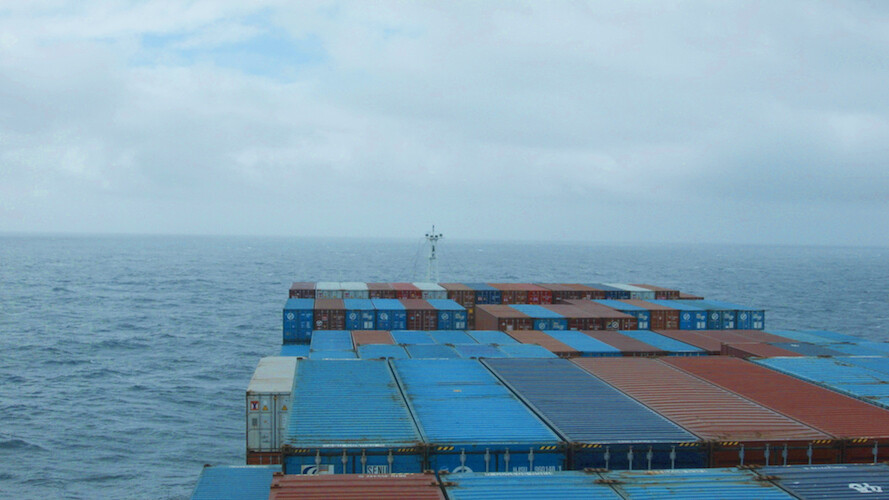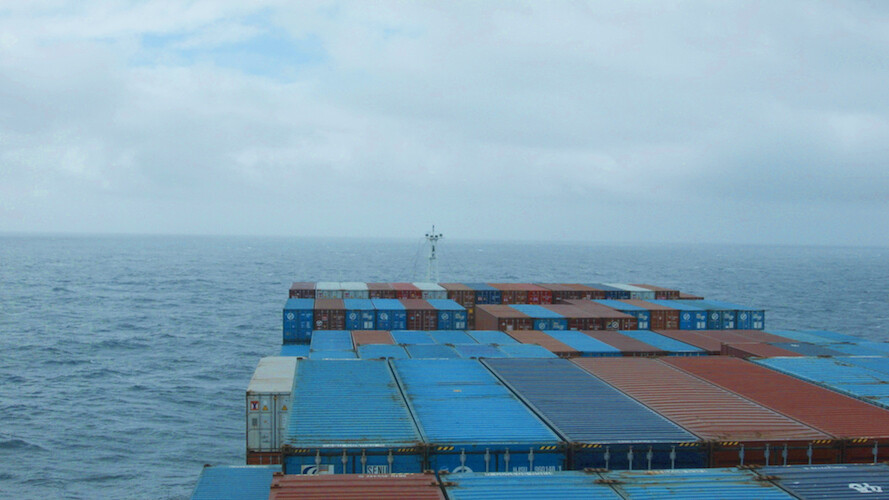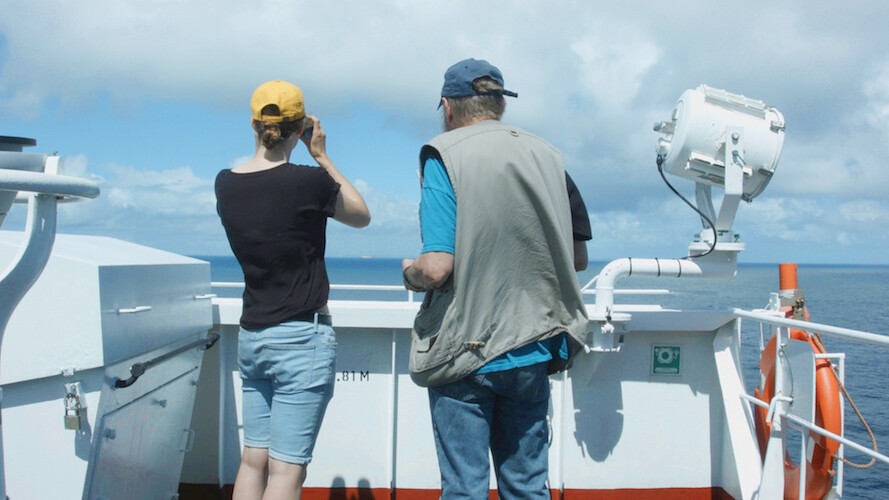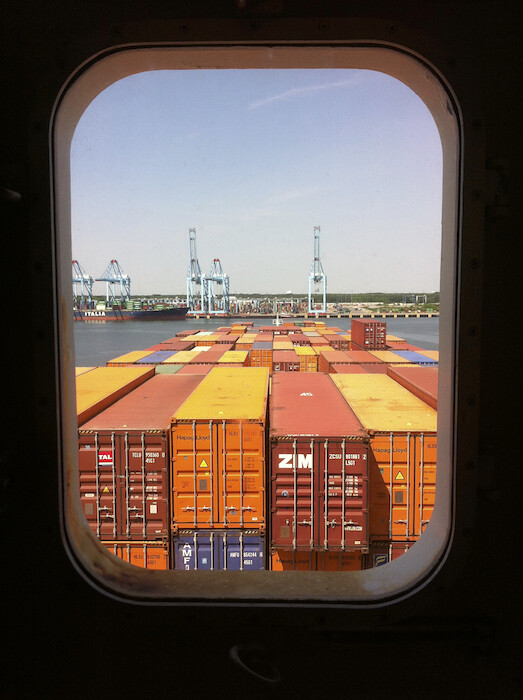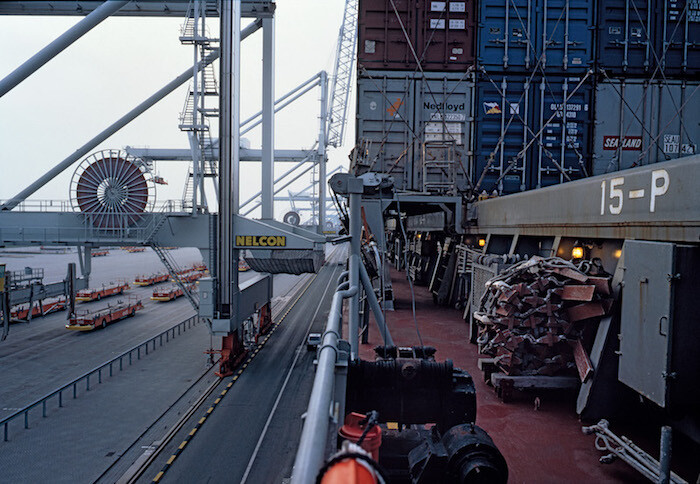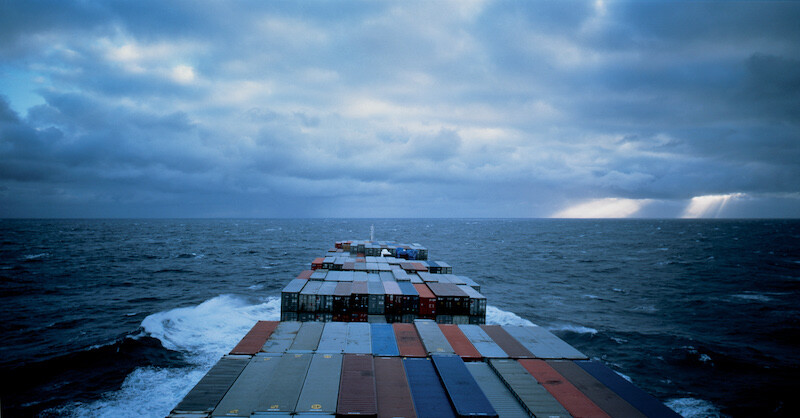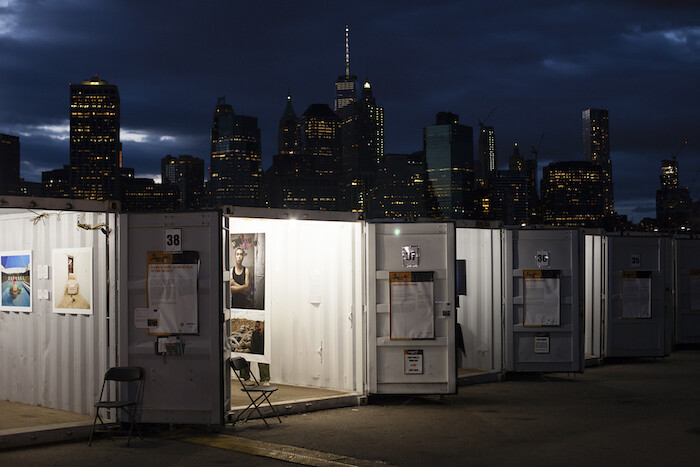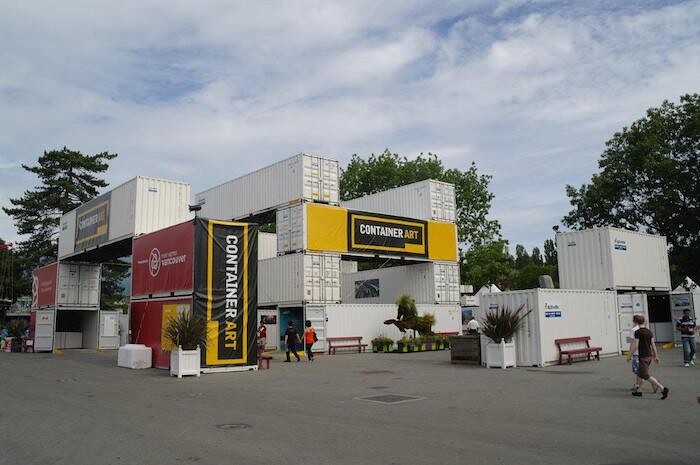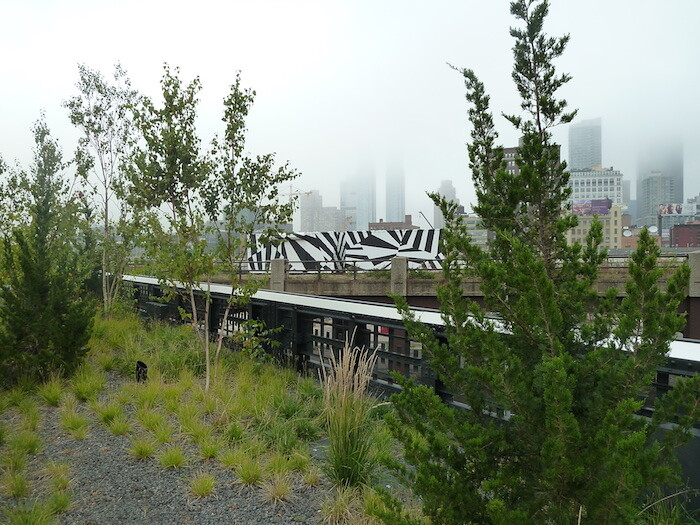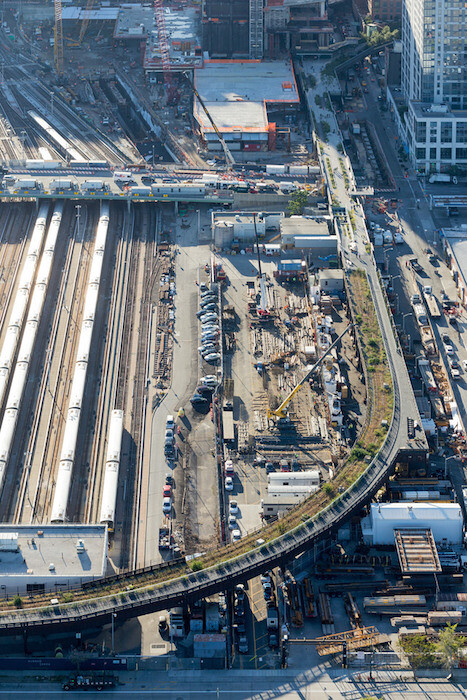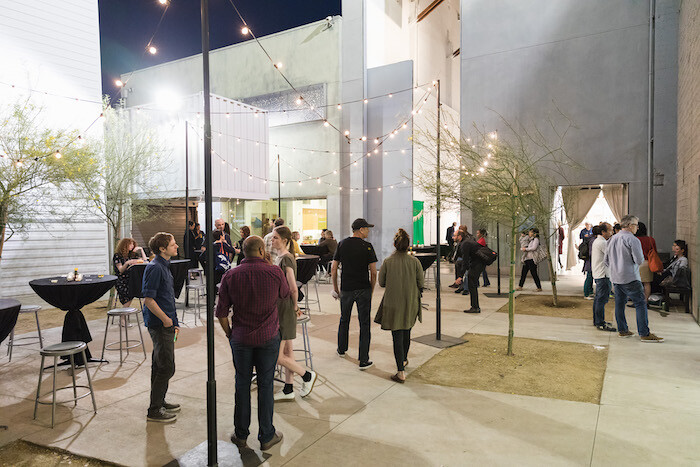The latest installment of Spaces considers the history of displaying contemporary art in shipping containers.
In August 2016, as global logistics firms slumped toward overcapacity, South Korean shipping giant Hanjin went conspicuously belly up. Over 80 of their cargo ships were suddenly turned away from ports around the world, while hundreds of multinational crew faced the further problem of securing either safe repatriation or another job. It was disaster for Hanjin, but a lucky break for Vancouver’s Access Gallery: among the sailors on a Hanjin carrier drifting beyond Tokyo was an artist, Rebecca Moss, whose “Twenty-Three Days at Sea” travelling artist residency stretched to a tense twenty-five. Suddenly, the obscure transit over distant ocean—what Allan Sekula calls the “forgotten space”—was making headlines in a way that an art project rarely does.
Hanjin bowed out just 60 years after Malcom McLean, a truck driver-turned-logistics capitalist, patented the 33-foot precursor to today’s standardized 40-foot container. Thanks to containerized shipping, irregular goods became regularized “flows”—timetables, tonnages, coordinates, and costs1—and the calculus of global trade achieved truly incomprehensible scale. This smooth logistical abstraction, by which we can forget that most goods still travel by ship, is coupled, dramatically, with the visual abstraction of the container—rack after rack of colorful, branded boxes, contents unknown; a found minimalism, a volumetric neo-geo. If these former logistical concerns are perhaps better understood by non-art specialists, this latter aesthetic dimension gives art an in. Indeed, the art world has been infatuated by cargo containers since the early aughts—not only using them for the setting of residencies like “Twenty-Three Days at Sea” and the aptly named Container Artist Residency, but employing them as art fair booths, mobile galleries, and sculpture materials. Yet as with the extent of global shipping itself, a kind of inbuilt invisibility lubricates the system. The art-world ubiquity of the standard shipping container goes largely unremarked—until something goes wrong.
Moss, part seafaring laborer, part a containerized good herself, became an accidental symbol of a globalized art industry operating with little oversight under its own flags of convenience. Meanwhile, the art market hurries art objects toward an ultimate commodification. Today even a very famous painting might be bought sight unseen and immediately parked in a container at a freeport in Switzerland, sometimes to change hands again without changing location. Sekula memorably calls the cargo container the “very emblem of capitalist disavowal”;2 the opaque box, indifferent to its contents, sheers goods from their specificity and abstracts the labor of their production and transport. Art “appreciates” in purely financial terms; it is not appreciated.3
As Picassos languish in Geneva, the next hot buys are on view at the fairs—sometimes already containerized. Art Basel Miami Beach inaugurated the trend in 2002, in its first edition, with the Art Positions program, a selection of “cutting-edge” galleries housed in an off-site block of “shipping containers converted to public art spaces by avant-garde architects.”4 The segment was billed as an opportunity for galleries who couldn’t afford true booths to nonetheless have a shot with Art Basel clientele. Turning steel boxes into white cubes is both practically and conceptually convenient—a mark of global motility to signal the transactional ease of a global fair. Fittingly, the project was initially sponsored by Danzas, once the fair’s official logistics partner.
The containerized gallery isn’t a destination so much as a vehicle. The shipping container, for art and otherwise, is a logistical solution—readymade, modular, cheap, deployable, and revocable. At Documenta 14 in Kassel, when organizers needed a ground level entrance for art displayed in a disused underground train station, they topped the old stairwell with a container. (“The lower level suggests a point of transit,” read the press materials, “in this case, of artworks that have perhaps just arrived or are about to depart.”) Elsewhere, as with Art Positions, the container offers flexible access to the more staid, brick-and-mortar nodes of commerce. The Hot Box container gallery project in Phoenix, for instance, opened on gallery row in 2016. In New York, the DiVA Video Art Fair (2005-2008) included DiVA Streets, a handful of containers placed in “strategic areas of Chelsea.”5 Nearby, the Photoville fair, annual since 2011, stacked containers into a dockside display of documentary media—if not of globalization itself, then of images of globalized society.
As the shipping container’s novelty has worn thin, the desires it formalizes have grown plain. From 2005–2012, ContainerArt, a defunct worldwide container-based exhibition project, visited Edmonton, Vancouver, and a series of Italian port cities. The organizers envisioned “empty containers ambling around the world, filling with beauty wherever they stop.”6 Such a modular anymuseumwhatever—space without location and transaction without movement—is nothing less than the abstract endgame of logistics.
In the container, this symbolic “immateriality” remains welded to an irrevocable structure. From Photoville on the harbor to Chelsea’s gentrified warehouses, containerized art marks the overlap between global art and global shipping, as both make landfall in the same post-industrial districts. In Chelsea, for instance—historically the meatpacking district, all docks and warehouses—the High Line that terminates at Renzo Piano’s Whitney Museum once carried containers. When Daly Genik (now Kevin Daly Architects) turned an old aircraft factory into the south campus of Pasadena’s ArtCenter College of Design in 2004, at the height of the container craze, they couldn’t resist a post-industrial flourish: jammed into the ground at crystalline angles near the west entrance are five whitewashed containers. What was meant as a kind of local specificity (the port of L.A. is among North America’s largest) is not so local or specific (one container port looks much like the next). More durable is the signal to students that global commodities are still designed and packaged within.
The “abstract,” even classically minimalist format of the container remains irresistible to urban designers. Even where no vacant warehouse or factory exists, a container or two might provide new construction with a dislocated post-industrial chic. The typology expands from galleries to their accoutrements—coffee kiosks, bars, shops—and, inevitably, to housing.7 As with other artistic uses of post-industrial space, practical measures (cheapness, availability) have become an aesthetic: the cultured taste that reimagines greasy factories as sun-filled lofts now sees airless boxes as efficient homes. It’s worth underscoring how these latter-day, trendy developments are entirely voluntary. When Rob Rhinehart, founder and CEO of tech-minded meal replacement brand Soylent, attempted to live in a bright red container airlifted to a hilltop in L.A.’s Lincoln Heights, he did so in the luxury of choice. Like a cruel parody of international modernism, the 40-foot unit had been punched with panoramic windows, and contained little besides a bed. Inside and outside indeed blurred, as this particular experiment in sustainable living was quickly abandoned to blight.8
The container is both surface and volume—the emblem of capitalist disavowal, and a box for that which is disavowed. For those in the developed world who don’t load and unload goods for a living, the inside provides a hard steel thrill akin to a tour on a decommissioned battleship, where most of the moving parts have been painted frozen. This groomed novelty masks a violent utility. Where a container gallery or booth might offer access to richer markets, identical containers serve to smuggle human cargo desperate for more basic opportunities.9 Sekula’s Fish Story (1996), the definitive essay on the subject, includes several photographs of waterfront vendors who sell snacks to container-port workers by day and sleep inside beached containers. This is a living experiment, too; but it is not sustainable. In this light, civic proposals to use containers to house the homeless, detain refugees,10 or even fast-track a retirement home have the tang of schemes to store undesirables out of sight. As Stefano Harney and Fred Moten remind us, logistics is inherently anti-subjective, and the shipping container a relentlessly anti-human object.11
Yet in this, too, the container’s sheer “neutral” materiality might broker denial. Art’s adoption of the shipping container expresses honesty and cynicism: art is a business, art/artists are commodities, so why not inhabit the bare symbol of logistical abstraction? Perhaps this much is old news. And perhaps, where we’re attuned to globalization’s considerable human cost, we remain in thrall to the container’s power to abstract the most uncomfortable congruencies into a 40-foot block of forgotten space.
Even so, Stefano Harney and Fred Moten write in The Undercommons that the fledgling logistics of midcentury owed its success to the adoption of the shipping container by the U.S. military: “Containerization was failing as a business innovation until the American government used containers to try to supply its troops in South East Asia with enough weapons, booze, and drugs to keep them from killing their own officers, to keep a war going that could not be won strategically.” Stefano Harney and Fred Moten, “Fantasy in the Hold,” The Undercommons (Wivenhoe: Minor Compositions, 2013), 89.
Allan Sekula, in conversation with Debra Risberg, “Imaginary Economies,” Dismal Science (Normal: Illinois State University, 1999), 248.
See Graham Bowley and Doreen Carvajal, “One of the World’s Greatest Art Collections Hides Behind This Fence,” The New York Times, May 28, 2016, https://www.nytimes.com/2016/05/29/arts/design/one-of-the-worlds-greatest-art-collections-hides-behind-this-fence.html.
See the description of Art Positions on the Art Basel Miami Beach 2002 website, archived at https://web.archive.org/web/20021105113856/http://www.artbasel.com:80/miami_beach/key_facts/index.html.
See the DiVA Fair website, archived at https://web.archive.org/web/20070227020243/http://www.divafair.com/ny_07/diva.html.
http://www.containerart.org.
See Fiona Shipwright, “Here’s Johnny… A Container Village for Students in Berlin,” uncube blog, September 23, 2015, http://www.uncubemagazine.com/blog/15970711. See also the architect Peter DeMaria, famous for his “cargo container based buildings”: http://demariadesign.com/2/.
See Rory Caroll, “Soylent CEO’s shipping container home is a ‘middle finger’ to LA, locals say,” The Guardian, July 27, 2016, https://www.theguardian.com/us-news/2016/jul/27/soylent-ceo-rob-rhinehart-shipping-container-home-la.
See Aidan Lewis, “Bodies of 27 migrants recovered in west Libya, 13 in shipping container,” Reuters, February 23, 2017, http://uk.reuters.com/article/uk-europe-migrants-libya-idUKKBN16225U.
See Patrick Wintour, “Hungary to detain all asylum seekers in container camps,” The Guardian, March 7, 2017, https://www.theguardian.com/world/2017/mar/07/-hungary-to-detain-all-asylum-seekers-in-container-camps.
See Harney and Moten, “Fantasy in the Hold.”
